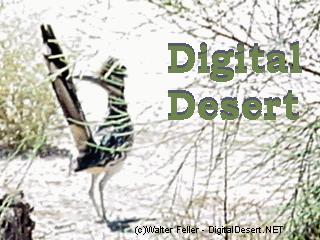Greater Roadrunner
Geococcyx californianusFamily: Cuculidae Order: Cuculiformes Class: Aves
DISTRIBUTION, ABUNDANCE, AND SEASONALITY
A yearlong resident in arid, brushy habitats below about 900 m (3000 ft) in coast ranges,
foothills and valleys exclusive of cultivated and inhabited floor of Central Valley, from eastern
Mendocino, Tehama and Shasta cos. south, reaching seacoast in central and southern
California; below about 1500 m (5000 ft) in deserts and desert ranges from Benton, Mono Co.
and Deep Springs Valley, Inyo Co. south. Fairly common in all desert habitats, and
uncommon in a variety of other habitats, including coastal scrub, chamise-redshank and
mixed chaparral, and valley foothill hardwood and montane hardwood-conifer habitats. Very
scarce and local in northern California, uncommon in coastal southern California, and fairly
common in deserts, especially to south (Grinnell and Miller 1944, Garrett and Dunn 1981).
SPECIFIC HABITAT REQUIREMENTS
Feeding: Hunts lizards, snakes, grasshoppers, other large invertebrates, mice, and
sometimes birds, by chasing and capturing them on the ground. Occasionally eats eggs and
nestlings of birds, and rarely seeds and fruits (Bent 1940).
Cover: Requires thickets, large bushes, or small trees for shade, refuge, and roosting.
Reproduction: Compact, open-cup nest of sticks about 0.3 m (1 ft) across, usually built in
low tree, shrub thicket, or clump of cactus, at height of 0.9 to 4.6 m (3-15 ft); rarely on ground.
Water: Drinks water where available, but it is uncertain whether water is required. Miller
and Stebbins (1964) suggested this species "not bothered . . . by lack of water".
Pattern: Most numerous in open areas mixed with tracts of brush, in arid, open land with
scattered bushes or thickets, or in chaparral edging on sparsely vegetated grassland.
Conversely, absent from extensive stands of unbroken chaparral, grassland, or sparsely
vegetated desert (Grinnell and Miller 1944).
SPECIES LIFE HISTORY
Activity Patterns: Yearlong, diurnal activity.
Seasonal Movements/Migration: None reported.
Home Range: Probably equal to territory size. Bryant (1916) reported a "mean home
range" of "several square miles" in California. Density estimates range from 1 pair per 100 ha
(250 ac) in desert riparian habitat in southern Nevada (Austin 1970) to 12 males per 100 ha
(250 ac) in southern Texas brushland (Roth 1977). Cardiff (1978) noted 5 per 100 ha (250
ac) in Mojave yucca-cholla desert scrub.
Territory: In Texas, Folse and Arnold (1978) found a mean territory size (diameter?) of 0.7
km (0.4 mi), range 0.4-1.0 km (0.2-0.6 mi). Calder's (1968a) data suggested a territory
diameter of 0.8 km (0.5 mi).
Reproduction: Peak of egg-laying April and early May. Monogamous; clutch averages 3-5
eggs (range 2-8). Incubation 16-20 days, apparently mostly by male; hatching is
asynchronous. Both sexes care for altricial young, which leave nest about 18-30 days after
hatching (Woods 1960, Calder 1967, Ohmart 1973).
Niche: Snakes and mammals prey on young and eggs (Folse and Arnold 1978).
REFERENCES
Austin, G. T. 1970. Breeding birds of desert riparian habitat in southern Nevada. Condor
72:431-436.
Bent, A. C. 1940. Life histories of North American cuckoos, goatsuckers, hummingbirds,
and their allies. U.S. Natl. Mus. Bull. 176. 506pp.
Bryant, H. C. 1916. Habits and food of the roadrunner in California. Univ. Calif. Publ. Zool.
17:12-50.
Calder, W. A. 1967. Breeding behavior of the roadrunner Geococcyx californianus. Auk
84:597-598.
Calder, W. A. 1968a. Nest sanitation: a possible factor in the water economy of the
roadrunner. Condor 70:279.
Calder, W. A. 1968b. The diurnal activity of the radrunner, Geococcyx californianus. Condor
70:84-85.
Cardiff, S. W. 1978. Mohave yucca-staghorn cholla desert scrub. Page 102 in W. T. Van
Velzen, ed. Forty-first breeding bird census. Am. Birds 32:49-125.
Folse, L. J. Jr., and K. A. Arnold. 1978. Population ecology of roadrunners (Geococcyx
californianus) in south Texas. Southwest Nat. 23:1-28.
Garrett, K., and J. Dunn. 1981. Birds of southern California. Los Angeles Audubon Soc.
408pp.
Grinnell, J., and A. H. Miller. 1944. The distribution of the birds of California. Pac. Coast
Avifauna No. 27. 608pp.
Miller, A. H., and R. C. Stebbins. 1964. The lives of desert animals in Joshua Tree National
Monument. Univ. California Press, Berkeley. 452pp.
Ohmart, R. D., and E. L. Smith. 1973. North American clapper rail (Rallus longirostris)
literature survey with special consideration being given to the past and current status of
yumanensis. U.S. Dep. Inter., Bur. Rec., Boulder City NV. 45pp.
Roth, R. R. 1977. The composition of four bird communities in south Texas brushgrasslands.
Condor 79:417-425.
Whitson, M. 1975. coutship behavior of the greater roadrunner. Living Bird 14:215-255.
Woods, R. S. 1960. Notes on the nesting of the roadrunner. Condor 62:483-484.
Wright, R. E. 1973. Observations on the urban feeding habits of the roadrunner (Geococcyx
californianus). Condor 75:246.
California Department of Fish and Game. California Interagency
Wildlife Task Group. 2005. California Wildlife Habitat Relationships version 8.1 personal computer program. Sacramento, California.

Roadrunner
Geococcyx californianus
A large black-and-white ground cuckoo quick enough to catch and eat small rattlesnakes. The Roadrunner prefers walking or running (up to about 18 miles per hour) rather than attempting to keep its large body in the air with its short rounded wings. Primarily carnivorous, the roadrunner will eat lizards, snakes, scorpions, other birds, rodents and insects found in the open or rolling terrain it inhabits throughout the desert. Depending on the scarcity of prey, the Roadrunner may supplement a small portion of its diet with vegetation.
Also see > Bird: Carnivore: Predator: Diurnal
Habitat:
Creosote Scrub